Eduardo Ribeiro
-
- A Pivotal Year for AUVs in the Oil & Gas Sector Marine Technology, May 2014 #24
AUVs are on their way. With vast scope for their application, autonomous underwater vehicles are finally gaining pace in the commercial sector. The technology, which has its origins in military activities such as mine counter-measure and rapid environmental assessment (MC & REA), also has a strong presence in research activities, from research mapping to environmental sensing. In fact, the military and research sectors have strong links which enable collaboration and, therefore, some units can be used across the sectors. The two sectors currently form 97% of AUV demand. However, Douglas-Westwood’s Word AUV Market Report 2014-2018 forecasts an annual growth of 36% in the commercial sector, predominantly driven by deepwater oil and gas activities, expanding the share of the total market from 3% in 2014 to 8% in 2018.
AUV Overview
AUVs have no umbilical connecting them to a host support vessel (as opposed to remotely controlled vehicles [ROVs]) as they have the advantage of carrying both on-board power and the computer capability to travel a pre-set path through the water, using a combination of internal and external posi¬tioning sources as well as sensors that give direction, depth, altitude and speed. AUVs, however, do not provide real time data such as video. They are used by civilian researchers and academics, commercial survey and inspection companies and by the world’s militaries to either provide information about the seabed, identify objects on the seabed or in the water column, or to provide a means of observing physical, chemical and biological processes. AUVs can be used to survey an area in a regular pattern or to follow a linear feature such as a pipeline.
The benefits of AUVs, compared to ROVs, manned vessels and towed vehicles also include operability in a wide variety of water depths and where surface vessels cannot be used due to surface restrictions/obstruc-tions. They have a wide range of deployment options ranging from manual to dedicated vessels; and can help reduce threats to personnel by increasing either the distance between hazard and operator, or by performing reconnaissance in advance of manned operations.
The most recent use of an AUV unit with wide media coverage is the Bluefin 21 in the search for the missing MH370 flight from Kuala Lumpur to Beijing in March 2014. This vehicle carries multiple sensors and payloads, and battery with endurance of up to 25 hours (at 3 knots), reaching 4,500m deep it is providing data which creates a 3D map of the area. The attempt follows the successful U.S. mission in 2011, which used three REMUS 6000s in search of the Air France 447, downed in 2009 when flying from Rio de Janeiro to Paris. The REMUS vehicles, which have an endurance of up to 22 hours reaching 6,000 meters water depth, were the main tool used to spot the plane’s flight recorders in waters almost 4,000 meters deep.
Key Developments
There are some key developments which should enable strong commercial uptake from 2014. These include sensors, battery endurance and positioning. Multiple sensors form a key component and continue to increase in data quality and resolution. Endurance is also under constant development, with rechargeable batteries powering the majority of AUVs now in use, while non-rechargeable batteries offer greater endurance, but at a significant cost. A small number of AUVs use fuel cells, but their use is not widespread due to concerns with the stor¬age and disposal of the chemicals. Even small AUVs typically now have quoted endurance of more than 10 hours, with larger vehicles in the 50-70 hour range. High endurance is central, as it enables AUVs to offer vast reduction in time lost in operations, in addition to the time saving when turning from one survey line to another when compared to a survey vessel towing sensors in deep water.
The particular application of the AUV and the performance of the navigation system payload that it carries will drive the level of accuracy required in the positioning of the vehicle whilst it is underwater and unable to benefit from GPS updates. This is crucial for hydrographical activities to comply with the International Hydrographic Organization (IHO) requirements. Civil hydrography, which includes oil & gas, is to emerge as an application in 2014. High-end navigation solutions are based around units that measure the motion of the vehicle in three dimensions, as well as being able to receive positioning updates from external sources such as vessel-based tracking systems, which are often supplemented by tracking the AUV’s movement relative to the seabed using the Doppler shift of an acoustic signal.
Unmanned launch and recovery is a goal of many developers as that phase of operations is perhaps the riskiest for the personnel involved. The launch and recovery requirement and methodology for AUVs vary. Smaller units are routinely deployed from the beach or small craft, whereas larger vehicles require the use of either a vessel’s deck crane or a dedicated launch and recovery system. This is an area in which many operators think there should be further improvements.
Future developments also include Hybrid Underwater Localization System (HULS), which enables data and imagery collection in real-time via a fiber-optic link, Large Diameter/Displacement AUV (LDUUV) to provide ultra-long endurance capability using fuel cells, and a number of military developments such as use on the Littoral Combat Ship (LCS), Remote Multi-Mission Vehicle (RMMV), SEAL Delivery System (SDS) and Surface MCM (SMCM) known as the “Shark”.
Commercial Applications: Drivers and Markets
The stage is set. The oil & gas industry is historically conservative when adopting new technologies, however, the above developments will act as enablers for commercialization, with 2014 expected to be a pivotal year. Growing energy demand globally, mainly driven by GDP growth in developing countries, will be met by supply from increasingly deep waters, as ’easy-to-reach’ reserves mature.
Mature offshore and fields and remote areas represent higher capital expenditure (Capex) per barrel, while oil prices are stabilizing. The result is that oil & gas companies are striving for the most cost effective solutions. AUVs are widely accepted to be cost effective, as opposed to vessel-based systems, and have proved to be an optimum solution in harsh environments (deepwater and under-ice).
Although shallow water exploration & production E&P will remain dominant during the next five years, most commercial demand for AUVs is expected to come from deepwater in the ’golden triangle’, of Brazil, Gulf of Mexico (GoM) and West Africa. Deepwater Capex is expected to double over the next five years, with $260 billion to be invested as the market continues to recover from the global economic downturn. Meanwhile, growth in maintenance markets is a key indicator for Life of Field Inspection (LoFI) and pipeline inspection, while offshore drilling is expected to boost oil & gas site survey activities, the main commercial application of AUVs, accounting for almost a third of commercial demand. To a lesser extent, AUVs are also expected to increase utilization rates in shallow waters.
With increasing regulations and costs, LoFI is a long-term goal for deepwater and remote production facilities inspection, run by unmanned or hybrid (AUV-ROV) vehicles. The application is still in pre-commercial stages, but has a great potential to demand a number of units for installations in Angola, Nigeria, Brazil, South Asia, North Sea, and US GoM, as LoFI using AUVs are more applicable in deepwaters. Site Surveys, which take place on the seabed where the new installation is planned, will also drive demand again in oil & gas deepwater activities in the Americas and Asia, while Africa should be the largest market demanding 47% of the units in 2018.
AUV activity also takes place in renewable (wind, wave and tidal) sites, especially wind energy in Europe, which accounted for over 90% of global cumulative capacity in 2012. The UK is the largest national market with above 3,000 MW installed, and offers potential for use of AUVs for cable route survey and inspections. Overall, AUV applications in renewables sites are still emerging, but investment in offshore renewable energy in Europe and Asia suggests a strong growth opportunity in the future.
Commercial, Military and Research markets account for 97% of global AUV demand in 2014. However, the commercial sector is expected to show exponential growth, more than tripling demand from 2014 to 2018. The total number of units across all sectors is expected to exceed 800 by 2018, an increase from approximately 600 in 2014.
An overview of the demand by region is as follows:
• Africa - Main activity will be site survey in the presalt area in Angola and Nigeria.
• Asia - Military demand will come from China, research in Japan and deepwater O&G in India, Indonesia and Malaysia.
• Australasia - Healthy demand for pipeline route survey and environmental sensing.
• Latin America - Strong commercial growth driven by deepwater oil & gas expenditure in Brazil.
• North America - The largest region, driven by the military sector. Research applications are also strong, while Gulf of Mexico oil & gas will increase demand for inspections and civil hydrography.
• Middle East - More applicable for low-logistics activities and potentially rig moves, pipeline surveys and inspections.
• Eastern Europe - Healthy demand in activities such as environmental sensing and hydrography.
• Western Europe - Large military sector, but proportionally larger for research activities.
North America will overall remain the leading region in the next five years, demanding most AUV units. However, other regions will become more active in all sectors, which should mean a decrease in the proportion of active units for the region, mainly driven by military activities in developing economies, such as China and Brazil, increasingly investing in their navies.
Conclusions
Douglas-Westwood forecast that the military sector will remain the largest AUV market in the next five years, driven by military investment from the developing economies. However, the sector is likely to direct less investment into AUV R&D, while commercially-driven developments grow. The ocean research sector will also remain strong with increasing attention to topics around environmental issues, resulting in a growing demand for data from environmental sensing and research mapping, including from deepwater and the arctic. As AUV technology matures in such applications, it should enable continued growth in those areas that are unsuitable for conventional access methods.
For the commercial sector, 2014 could be a turning point in AUV market uptake. The commercial use of AUVs has seen only moderate growth in recent years. However, the technology has evolved and while oil & gas operators remain risk averse, opportunities in the commercial sector could increase, enabled by developments in areas such as battery endurance, navigation systems, tracking systems, vehicle stability, data and imagery.
Barriers may be primarily in launch and recovery systems for larger units and data transmission, as AUVs do not offer real-time data. However, these areas should be progressively addressed by developments such as unmanned launch and recovery systems, hybrid vehicles and docking stations for in-water charging and improved through-water data transmission.
The increased economic challenges of deepwater oil & gas developments lead to a desire to introduce cost-effective approaches. AUVs have proved to be an optimum cost-effective solution for surveys and inspections, as opposed to the higher costs of vessel-based activities. Factors include operation and time costs, and reducing direct human involvement in activities in high risk environments. Douglas-Westwood expects further increases in AUV use in deep waters and under-ice as an alternative to ROVs. AUVs are still considered an emerging technology and require more uptake and investment before posing a significant substitution risk for surface vessels and ROVs. However, 2014 is expected to represent the first year of significant growth which should allow the technology to be the industry eyes in the deepest waters.The Author
Eduardo Ribeiro (MSc), Researcher and author of the DW’s World AUV Market Forecast 2014-2018, has been involved in high level projects and advisory work for oilfield service companies and the public sector, undertaking market modelling and analysis; specialising in offshore deepwater market E&P activities.
The Report
DW’s 5th edition of the AUV Market Forecast covers all key commercial themes relevant to players across the value chain in all AUV sectors:
• Technology review – description of current technology and ongoing developments;
• Competitive landscape – for manufacturers and operators, including their main activities;
• Key drivers – identification and discussion of key underlying drivers and their influence on the global AUV market by sector;
• Regional forecasts – analysis of AUV de¬mand development from 2014 to 2018;
• Sector forecasts – demand for AUV units segmented by commercial, military & research sectors, including recent activities and drivers for each activity and region.
www.douglas-westwood.com/shop/shop-infopage.php?longref=1326#.U0_ljfldWrI
(As published in the May 2014 edition of Marine Technology Reporter - http://www.marinetechnologynews.com/Magazine)
-
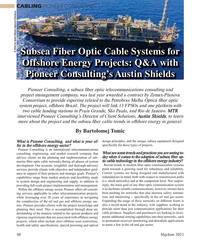 )
May 2023 - Marine Technology Reporter page: 40
)
May 2023 - Marine Technology Reporter page: 40CABLING PIONEER CONSULTING © 2022 by Andre Ribeiro/Agência Petrobras Subsea Fiber Optic Cable Systems for Offshore Energy Projects: Q&A with Pioneer Consulting’s Austin Shields Pioneer Consulting, a subsea ? ber optic telecommunications consulting and project management company, was last year awarded a
-
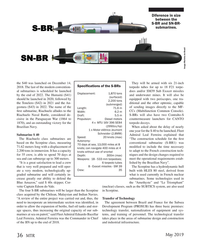 )
May 2019 - Marine Technology Reporter page: 36
)
May 2019 - Marine Technology Reporter page: 36thus increasing the original capacity of our sub- technology transfer, nationalization of equipment and sys- marines at sea on patrol,” said Fleet Admiral Eduardo Bacellar tems, and training of personnel. The technological transfer Leal Ferreira. Admiral Ferreira was the Commander in Chief takes place in
-
 )
April 2019 - Maritime Reporter and Engineering News page: 42
)
April 2019 - Maritime Reporter and Engineering News page: 42submarines at sea on pa- Transfer of Technology miles at 4 knots without use of snorkel by the end of 2022. The Humaitá (S41) trol,” said Fleet Admiral Eduardo Bacel- The agreement between Brazil and Depth: 300 metros (max) should be launched in 2020, followed lar Leal Ferreira. Admiral Ferreira was France
-
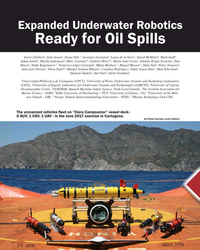 )
March 2018 - Marine Technology Reporter page: 24
)
March 2018 - Marine Technology Reporter page: 24Expanded Underwater Robotics Ready for Oil Spills 1 2 3 4 5 6 6 Javier Gilabert , João Sousa , Zoran Vuki , Georgios Georgiou , Laura de la Torre , David McMyler , Mark Inall , 8 9 10 11 2 2 Juhan Ernits , Martin Ludvigsen , Marc Carreras , Gabriel Oliver , Maria João Costa , António Sérgio Ferreira
-
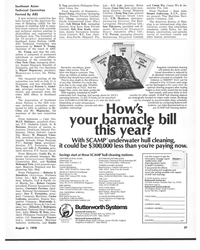 )
August 1978 - Maritime Reporter and Engineering News page: 25
)
August 1978 - Maritime Reporter and Engineering News page: 25, presi- dent, Compania Maritima; Carlos Ledesma, president, Negros Nav- igation Company; Bienvenido L. Lim, president, Reyes & Lim Com- pany, Inc.; Eduardo J. Rodriguez, president, National Steel Corpora- tion; Adm. Hilario M. Ruiz, pres- ident, Philippine Dockyard Corpo- ration; Col. Generoso F
-
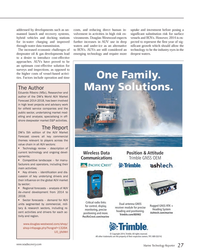 )
May 2014 - Marine Technology Reporter page: 27
)
May 2014 - Marine Technology Reporter page: 27to represent the Þ rst year of sig- niÞ cant growth which should allow the technology to be the industry eyes in the deepest waters. The Author Eduardo Ribeiro (MSc), Researcher and author of the DW?s World AUV Market Forecast 2014-2018, has been involved in high level projects and advisory work for
-
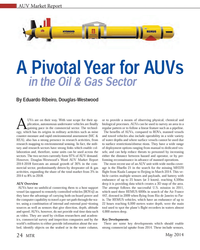 )
May 2014 - Marine Technology Reporter page: 24
)
May 2014 - Marine Technology Reporter page: 24uptake from 2014. These include sensors, A Pivotal Year for AUVs A Pivotal Year for AUVs in the Oil & Gas Sector in the Oil & Gas Sector By Eduardo Ribeiro, Douglas-Westwood By Eduardo Ribeiro, Douglas-Westwood 24 MTRMay 2014MTR #4 (18-33).indd 24MTR #4 (18-33).indd 245/12/2014 10:49:31 AM5/12/2014
-
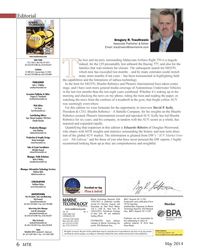 )
May 2014 - Marine Technology Reporter page: 6
)
May 2014 - Marine Technology Reporter page: 6years, and his company, in tandem with the AUV sector as a whole, has matured and expanded rapidly. Quantifying that expansion in this edition is Eduardo Ribeiro of Douglas-Westwood, who shares with MTR insights and statistics surrounding the history and near term direc-tion of the global AUV market.
-
 )
May 2014 - Marine Technology Reporter page: 4
)
May 2014 - Marine Technology Reporter page: 424 A Pivotal Year With vast scope for their application, autonomous underwater vehicles are Þ nally gaining pace in the commercial sector. By Eduardo Ribeiro MTR #4 (1-17).indd 4MTR #4 (1-17).indd 45/13/2014 11:10:14 AM5/13/2014 11:10:14 A
-
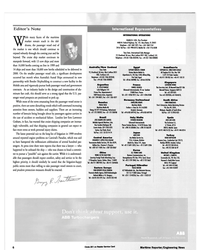 )
January 2000 - Maritime Reporter and Engineering News page: 6
)
January 2000 - Maritime Reporter and Engineering News page: 6Martima, Ltda. Rua Caralino Rodrigues 28 Cuarto Andar, CEP-11055-070 Santos, Sao Paulo, Brazil Tel/Fax: +55 1 32 32 74 74 Central America EDUARDO F. LOPEZ/ISELA BA2AN Transmarine Media Services, P.O. Box 8579, Balboa Ave., Panama 5, Panama Tel: +507 617 1469; Fox: +507 223 8367 China
-
 )
September 2000 - Maritime Reporter and Engineering News page: 6
)
September 2000 - Maritime Reporter and Engineering News page: 6Adachi-ku, Tokyo 121, Japan Santos, Sao Paulo, Brazil Tel:+81 3 5691 3335; Tel/Fax: +55 1 32 32 74 74 Fax:+ 81 3 5691 3336 Central America Korea EDUARDO F. LOPEZ/ISELA BAZAN JO, YOUNG SANG Transmarine Media Services, P.O. Box 8579, Business Communications, Inc. Balboa Ave., Panama 5, Panama Kwangwhamun
-
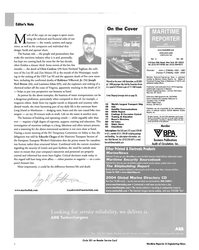 )
March 2004 - Maritime Reporter and Engineering News page: 6
)
March 2004 - Maritime Reporter and Engineering News page: 6accidents is not even close at hand. During a recent meeting of the EU Temporary Committee on Safety at Sea, the delegation was told by Eduardo Chagas of the Maritime Transport Section of the European Transport Worker's Federation that the prime reason for casualties was human rather than
-
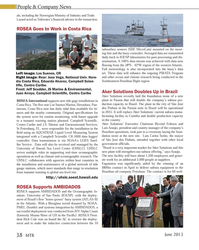 )
June 2013 - Marine Technology Reporter page: 38
)
June 2013 - Marine Technology Reporter page: 38. The contract is for 60 well- People & Company News Left image: Los Suenos, CR Right image: Rear: Jose Vega, National Univ. Here- dia Costa Rica, Eduardo Alvarez, Campbell Scien- tiÞ c, Centro Caribe. Front: Jeff Scudder, JS Marine & Environmental, Juan Arroyo, Campbell Scienti Þ c, Centro Caribe June
-
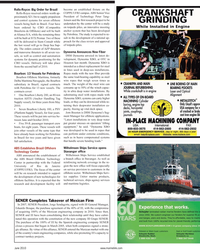 )
June 2, 2010 - Maritime Reporter and Engineering News page: 81
)
June 2, 2010 - Maritime Reporter and Engineering News page: 812010 www.marinelink.com 81 SENER Completes Takeover of Mexican Firm In 2007, SENER President, Jorge Sendagorta, signed with III General Manager, Eduardo Bosque, the purchase agreement of the 40% of III, with the compromise of acquiring 100% of the Mexican engineering company in 2010. Since then, SENER
-
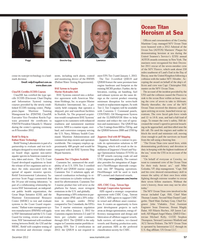 )
December 2012 - Maritime Reporter and Engineering News page: 57
)
December 2012 - Maritime Reporter and Engineering News page: 57pines-Japan Maritime Training Management Inc. (PJMTM). ClassNKExecutive Vice President Koichi Fuji- wara presented the certificates to PJMTM President Eduardo U. Maneseduring the center?s opening ceremony on 8 November 2012. Retlif To Help in Ballast Water Technology Retlif Testing Laboratories is part
-
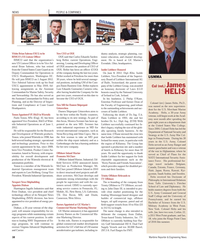 )
July 2012 - Maritime Reporter and Engineering News page: 38
)
July 2012 - Maritime Reporter and Engineering News page: 38to leading NNS' Department of En-ergy programs, he will continue to oversee Virginia Advanced Shipbuilding and CarrierNew CEO at OSX OSX said that Carlos Eduardo Sarden- berg Bellot, current Operations, Engi- neering, Leasing and Developing Officer of OSX assumes the position of CEO ofOSX. Bellot has been an
-
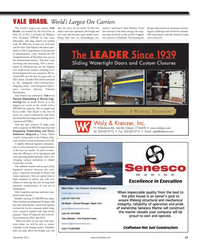 )
December 2011 - Maritime Reporter and Engineering News page: 23
)
December 2011 - Maritime Reporter and Engineering News page: 23and, in 2011 alone, a further $5b will be invested in the integrated mine-railroad-port- shipping chain,? said Integrated Opera- tions executive director, Eduardo Bartolomeo.Vale Brasil was ordered by Vale fromDaewoo Shipbuilding & Marine Engi- neering Co.in South Korea. It is the biggest ore carrier in the
-
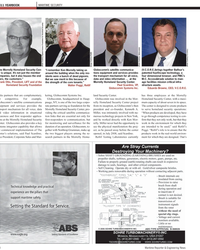 )
June 2011 - Maritime Reporter and Engineering News page: 32
)
June 2011 - Maritime Reporter and Engineering News page: 32fourDscape technology, a four dimensional browser, and PMC's M.C. Access&trade solution to man-age facilities mission critical infra-structure assets. Eduardo Browne, CEO, V.C.O.R.E.
-
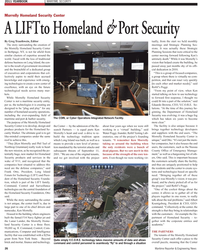 )
June 2011 - Maritime Reporter and Engineering News page: 30
)
June 2011 - Maritime Reporter and Engineering News page: 30my point of view, when Ken started talking on how to use technology to forward first response, I thought we could fit into a part of the solution,? said Eduardo Browne, CEO, V.C.O.R.E. So- lutions. At the time of this journey be- ginning, the Department of HomelandSecurity was evolving; it was a huge fog
-
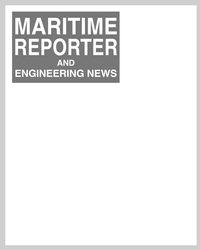 )
January 4, 2011 - Maritime Reporter and Engineering News page: 8
)
January 4, 2011 - Maritime Reporter and Engineering News page: 8, CHARTERING & OFFSHORE SERVICESPROFILE Roberto Monteiro CFO, OSX Shipbuilding, Chartering & Offshore Services Roberto Monteiro, CFO, left, and Luiz Eduardo Carneiro, CEO, right. (Photo C Paschoa) FPSO OSX 1 (Photo OSX)
-
 )
January 2, 2011 - Maritime Reporter and Engineering News page: 8
)
January 2, 2011 - Maritime Reporter and Engineering News page: 8, CHARTERING & OFFSHORE SERVICESPROFILE Roberto Monteiro CFO, OSX Shipbuilding, Chartering & Offshore Services Roberto Monteiro, CFO, left, and Luiz Eduardo Carneiro, CEO, right. (Photo C Paschoa) FPSO OSX 1 (Photo OSX)
-
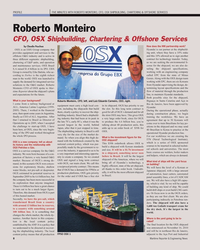 )
January 2011 - Maritime Reporter and Engineering News page: 8
)
January 2011 - Maritime Reporter and Engineering News page: 8, CHARTERING & OFFSHORE SERVICESPROFILE Roberto Monteiro CFO, OSX Shipbuilding, Chartering & Offshore Services Roberto Monteiro, CFO, left, and Luiz Eduardo Carneiro, CEO, right. (Photo C Paschoa) FPSO OSX 1 (Photo OSX)
-
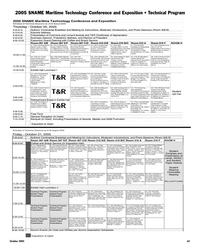 )
October 2005 - Maritime Reporter and Engineering News page: 65
)
October 2005 - Maritime Reporter and Engineering News page: 65Presentations C11 - D33: New Promising Generation of Twin-Gondola LNG Carriers Optimized with the Aid of CFD Calculations; Henk H. Valkhof, Eduardo Minguito and Klaas Kooiker D11 - D01: Seaway Load Prediction Algorithms for High Speed Hull Forms; Jerome P. Sikora, Nathan B. Klontz E11
-
 )
September 2005 - Maritime Reporter and Engineering News page: 35
)
September 2005 - Maritime Reporter and Engineering News page: 35Presentations C11 - D33: New Promising Generation of Twin-Gondola LNG Carriers Optimized with the Aid of CFD Calculations; Henk H. Valkhof, Eduardo Minguito and Klaas Kooiker D11 - D01: Seaway Load Prediction Algorithms for High Speed Hull Forms; Jerome P. Sikora, Nathan B. Klontz E11
